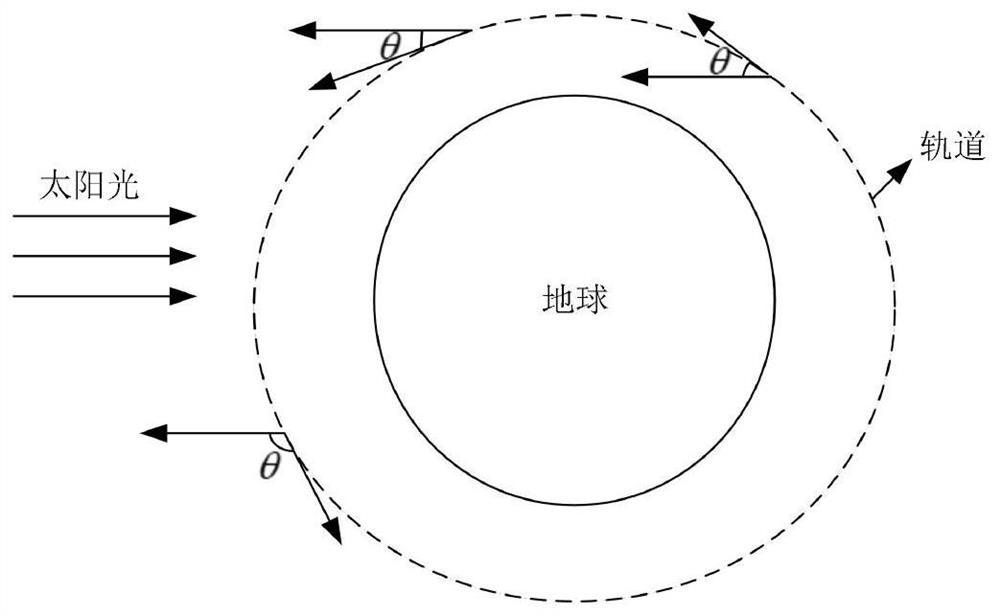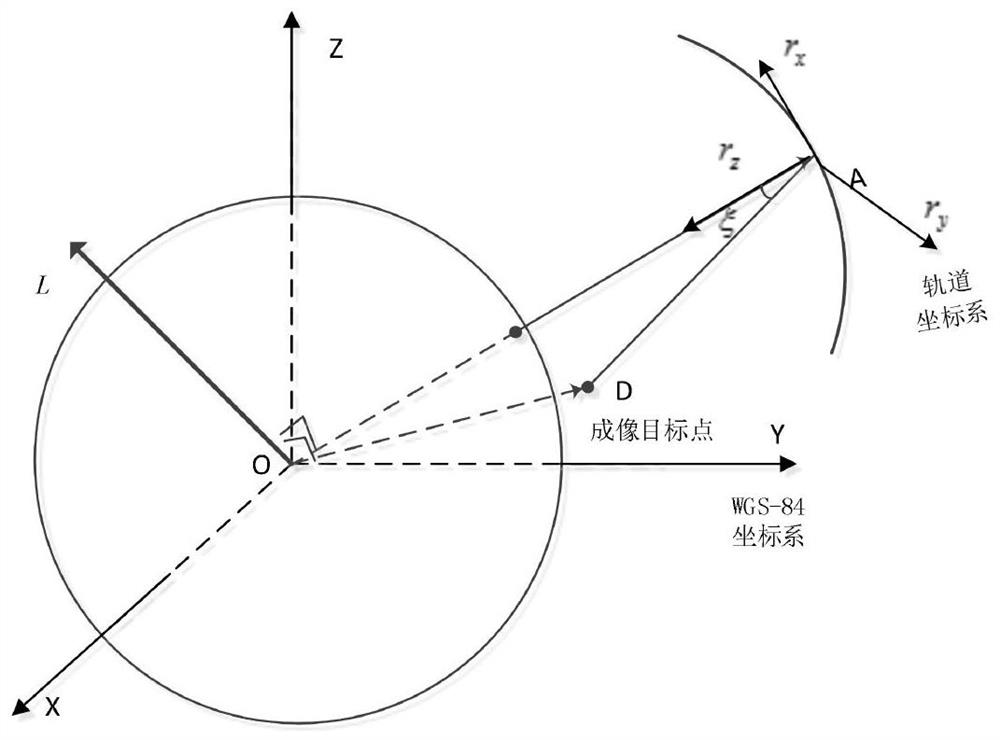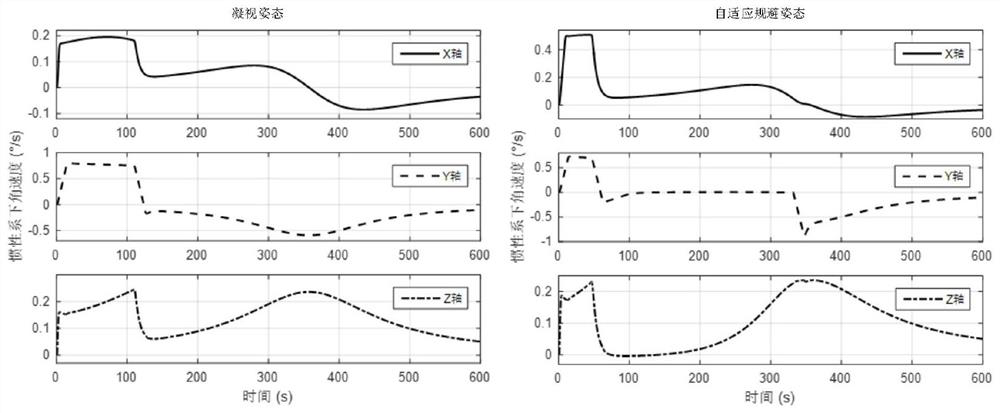Data transmission attitude planning method for adaptively avoiding sun
A self-adaptive, attitude technology, applied in the aerospace field, can solve the problems of affecting the imaging quality of the camera on-orbit service life, the temperature rise of the inner wall of the camera lens barrel, and avoiding the incidence of sunlight.
- Summary
- Abstract
- Description
- Claims
- Application Information
AI Technical Summary
Problems solved by technology
Method used
Image
Examples
specific Embodiment 1
[0063] according to Figure 1 to Figure 11 As shown, the present invention provides a method for adaptively avoiding the sun's digital transmission attitude planning, comprising the following steps:
[0064] Step 1: Determine the solar vector under the WGS84 system according to the solar vector under the J2000 system and the conversion matrix between the J2000 system and the WGS84 system;
[0065] The step 1 is specifically:
[0066] Step 1.1: Calculate the Julian day JD and the Julian century T using UTC:
[0067]
[0068]
[0069] Among them, year, month, and day represent Greenwich mean year, month, and day; hour, minute, and second represent UTC hours, minutes, and seconds; int() represents rounding;
[0070] Step 1.2: When the earth moves around the sun, determine the sun vector R in the J2000 coordinate system SJ , the ecliptic angle i and the solar longitude l are expressed by the following formula:
[0071] i=23°26′21.448″-46.8150″T-0.00059″T 2 (0.019993°-0....
specific Embodiment 2
[0107] Orbit type: sun-synchronous orbit; orbit altitude: 535km; descending node local time: 11:20am.
example 1
[0109] Arctic station: longitude 15.438°, latitude 78.227°, height 0m;
[0110] Simulation start time: 635918400 (16:00:00, February 25, 2020, Beijing time);
[0111] Satellite WGS84 position (km): [-83.999705 2694.171159 6365.991616];
[0112] Satellite WGS84 speed (km / s): [2.955540 -6.495626 2.788032];
[0113] Simulation duration: 600 seconds;
[0114] Phased array maximum beam angle: 60°;
[0115] The angular velocity, attitude angle, and the angle between the Z axis and the sun under the staring attitude and the adaptive avoiding the sun attitude are compared respectively. The angular velocity under the inertial system under the two digital transmission attitudes is as follows: image 3 As shown, the attitude angle of the orbit system is as follows Figure 4 As shown, the satellite attitude rotation angle is as follows Figure 5 As shown, the angle between the Z-axis of the satellite body system and the sunlight is as follows Image 6 shown.
[0116] From the simul...
PUM
 Login to View More
Login to View More Abstract
Description
Claims
Application Information
 Login to View More
Login to View More - R&D
- Intellectual Property
- Life Sciences
- Materials
- Tech Scout
- Unparalleled Data Quality
- Higher Quality Content
- 60% Fewer Hallucinations
Browse by: Latest US Patents, China's latest patents, Technical Efficacy Thesaurus, Application Domain, Technology Topic, Popular Technical Reports.
© 2025 PatSnap. All rights reserved.Legal|Privacy policy|Modern Slavery Act Transparency Statement|Sitemap|About US| Contact US: help@patsnap.com



